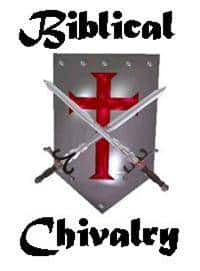This series of short lessons attempts to detail Jesus’ Roadmap for the Future. It starts with the last lessons Jesus gave the disciples on the Mount of Olives, and ends with teachings from the Apostle Paul about the Rapture.
As an introduction, the Olivet Discourse was aimed at the consequences of Israel’s rejection of Jesus as Messiah, and anticipated the destruction of the nation (70 A.D.) and the final Tribulation period. Remember that the Church Age is an intercalation—meaning an insertion, like a parenthesis, into the Age of Israel. This means that with the Rapture of the Church, the Tribulation picks up where 70 A.D. leaves off. This is why the Church Age is called a “mystery” (Rom. 11:25; 16:25; Eph. 3:1–13; Col. 1:26–27), which is a graduate course to “the principalities and powers in the heavenly places” (Eph. 3:10).
The Olivet Discourse reveals the consequences of Israel’s rejection of her Messiah (compare Matt. 23:37–39 and Rom. 9:1–5; 10:1–4; 11:25). These consequences are defined by Paul as “wrath … to the uttermost” (1 Thess. 2:15–16).
The outline is actually given by Jesus Himself, by using certain key words as markers of the divisions. Perhaps the most obvious of these words is “Then,” a time-word indicating a sequence of events. We find this in Matt. 24:1, 9, 11, 16, 21, 23, 29, 40; 25:1, 7, 16, 24, 34, 37, 41, 44, 45. With the exception of its use in Matt. 24:1, where it connects Jesus’ departure from the Temple with the following discourse, in all the subsequent times, it is used specifically to refer to the Tribulation period followed by His Second Coming. It is worth quoting Mark, here, for the statement he includes:
“For in those days there will be tribulation, such as has not been since the beginning of the creation which God created until this time, nor ever shall be.” Mark 13:19
In Matthew 24, Jesus gives us an outline, speaking of “tribulation” (Matt. 24:9), followed by “the abomination of desolation” (Matt. 24:15, see Dan. 11:31; 12:11), which is then followed by “great tribulation” (Matt. 24:21) and, finally, “after the tribulation of those days” (Matt. 24:29) by the return of Christ to Earth (Matt. 24:30–31). Although both Mark 13 and Luke 21 include portions of this message, only Matthew gives us such a clear picture of the chain of events.
Gene Cunningham - October 12, 2000
Biblical Chivalry #7

Men are called to be heroes. Foundations of character: Faith (1Co 4:2), Meekness, Self Control. Faith = expression of faith; Meekness = expression of hope; Self Control = expression of love (1Co 13:13). All three foundations are intangible, 2Co 5:7 and Joh 3 are example of you see it by faith. The foundations are: Faith in a person; Hope in a Plan; Submission to GOD’s love. Isa 43:7 GOD’s plan. Act 24: Paul who was called for the gentiles, longed (against GOD’s will) to go to the Jews. He was disciplined and given to Felix for judgment. Paul chose to return to his message and in his defense gave Felix the gospel in the form of a message on righteousness, self control, and the judgment to come. Felix hardened his heart. 2 types of rejection of the message. Those that harden and Satan who waits for a better time LUK 4. The answer is today is the time! 2Co 6: 1-2, Heb 3: 7-15, Eph 5:16, Col 4:5. Rome was built on family virtues: Gravitas - accountability, Piteous - submission to proper authority, Simplicitos - seeing things as they are. Self control gives us confidence, delivers us from fear. Power - Eph 1:19 - InKratos “autocratic, ruler ship of a monarchy in you; under the reign of grace.”
Scripture References: Colossians 4:5, Ephesians 5:16, Hebrews 3:7-15, Isaiah 43:7, Ephesians 1:19



